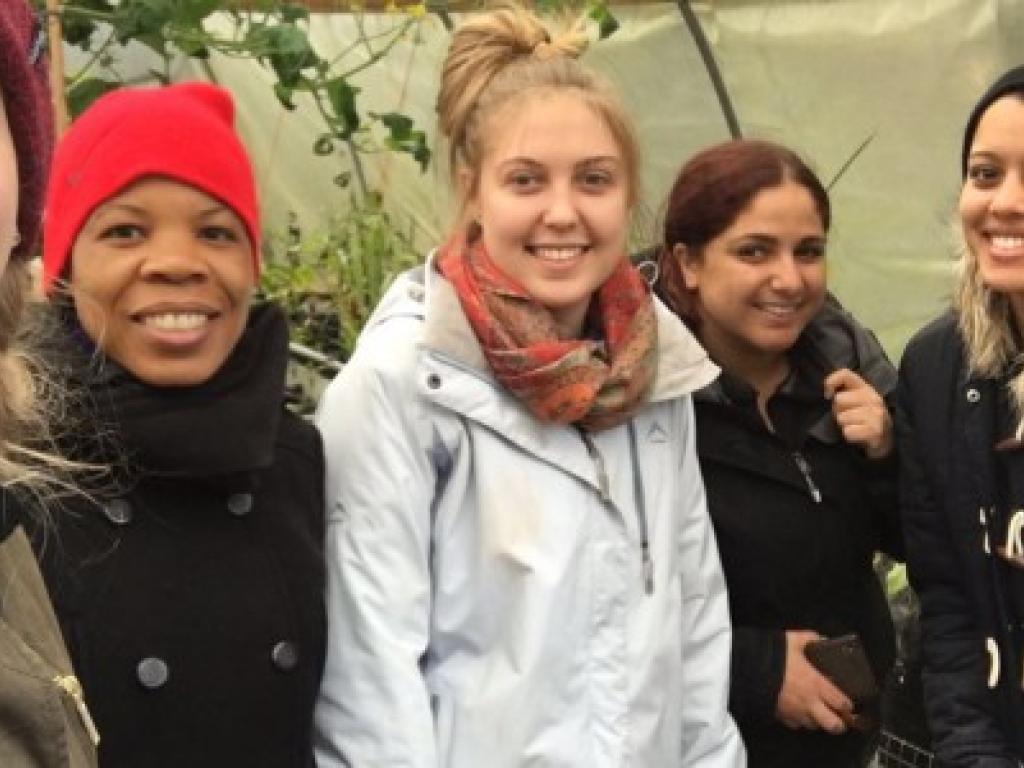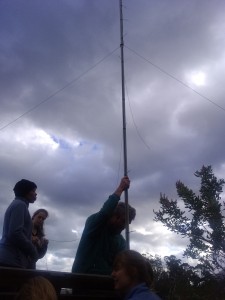Collecting in-situ data – EGS4038F Course Field Trip


We organised ourselves into two teams and equally divided the work shifts. We strategically planned our routine rotating instruments for each shift so that we all had the opportunity and experience to work with them until eventually we found the one best suited.


We arrived at Prof. B Hewiston’s farm located right on the edge of Klein River Lagoon. On this farm we sampled various weather data along a transect every 3 hours.
Weather balloons were released intermittently and students and interns got a chance to set up a temporary weather station. After a weary night of collecting data the morning was welcomed with a new venture at the family farm of Rodger Duffet. Here we got to see a truly “green” lifestyle, which surely made us aware of changes needed in our own lifestyles. On this farm they use solar panels, a bio-digester and even aquaponics. While the “green” side of the farm was interesting, it was also an opportunity to release two weather balloons simultaneously from the two farms to compare atmospheric profiles.
While most of us have worked with various datasets we are unaware of the hard work and substantial amount of time dedicated to collect in-situ data. In most cases the datasets needed is just a click away. This field trip not only formed part of a course but gave us insight into data collection. We worked with various equipment such as the kestrel meter, spinning hygrometer, radiometer and digital multimeter which allowed us to gain first hand experience in collecting temperature, solar radiation, wind and soil moisture data. While most of these instruments are easy to use it is also important to note that a struggle may ensue when weather conditions are unsound or instruments are temperamental.

The data collection took place at all hours of the day (and night). At first a 3 am walk was an exciting thought, the reality however, included being woken by an alarm at 2:50 am and a long walk in the rain. The dark nights and weather conditions made wanting 3 m visibility seem a bit hopeful. Yet in these conditions we navigated over rocks at one end of the transect and walked ever carefully along paths littered with mole holes at the other end (we think they were mole holes since we never actually saw anything). Even with the troubles of night hikes and wake up calls at all hours of the day the actual process of collecting the data turned out to be fun and in most cases without any problems.
While collecting data was generally a painless process, there were times when collecting data was a bit more tricky than usual. The best way to describe it is to just give a little insight of our weather balloon launches. Some of these latex balloons were discovered to have holes in them (after being inflated!), which rendered them rather useless. After getting the balloons sorted and the radio sonar attached the next problem was getting the balloons outside and holding them while the wind tried to pull them from the grips of the person holding it. At some stage a simultaneous balloon launch was attempted (as previously mentioned). In our minds the perfect launch meant we would get perfect data, until the phone rang. It was a call to inform us of the misfortune that both balloons were released using the same radio frequency and as a consequent the data was being scrambled thus no data was obtained from these balloon launches (what a waste! but lesson learnt!).
The data collected also helped us create weather forecasts following our shifts. Coming to a conclusion whilst writing a forecast was rather tedious, because each of us would bring different approaches leading to discussions (Digressions included). We did stumble upon predicting incorrect forecasts, showing how unpredictable weather can be and how critical one should be when reporting forecasts. This dilemma is out of our control and as scientists we need to keep up-to-date with current climate science and technology to advance and improve our weather forecasts.
After all the trials and trivia involved it was nice knowing we could go back to a delicious warm plate of food and enjoy the stimulating conversation of one another. The trip was made ever enjoyable (and comfortable) by Prof. Bruce Hewitson and wife as well as Dr Piotr Wolski and wife. While Rodger Duffett provided an overall look into a sustainable lifestyle.
P.S We did not forget about our favourite frenemy pair Pebbles and Old Diva!!!